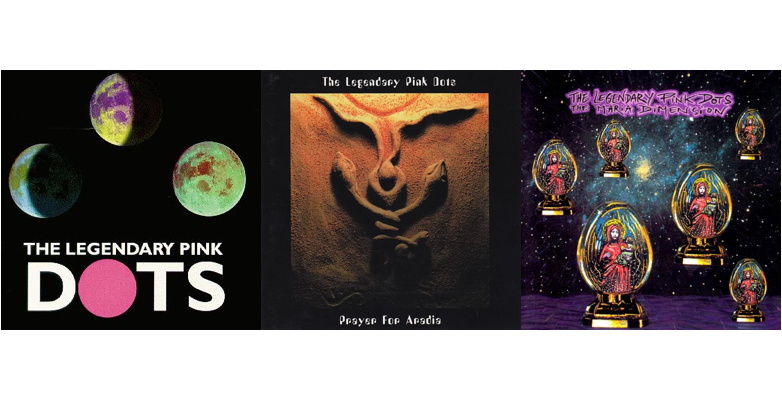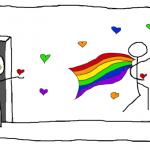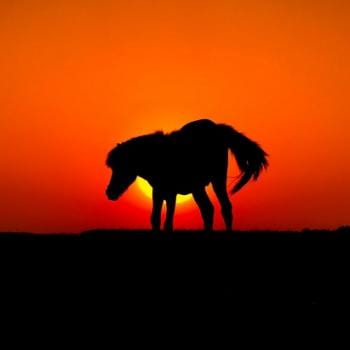Hello, beautiful creatures! Welcome back to “Mixtape of Shadows,” a feature in which we take a look at (and give a listen to) musicians outside the world of “Pagan music” whose work nevertheless touches on—or dives into—the magical, the mystical, and the just plain occult. And if you’d like to listen along, a Spotify playlist sized to fit on an old-fashioned C-90 cassette is included below. Think of it as a kick-off soundtrack for the weekend!

Okay, wait. Let me catch my breath a moment, and we’ll try again.
So. There’s this guy, Edward Ka-Spel. He’s something of a poet-songwriter, in a very English, very post-Syd-Barrett kind of way. He co-founded a band called The Legendary Pink Dots in 1980. They started out as a gloomy, gothy-synthy-new-wave kind of band, albeit with some fairly odd lyrics. Some bands start out a little strange, then normalize as their fan base grows. The Dots went entirely in the other direction: their faintly conventional music got odder and odder as time went on, incorporating elements of psychedelia, jazz, industrial, ambient, noise, and general avant-garde weirdness. At the same time, Ka-Spel’s lyrical concerns grew ever more obscure and whimsical, aided and abetted by a distinctive vocal style which lends even the most innocuous phrase an air of surreality, or of menace. This style and subject matter carries over into his solo work and side projects, including The Tear Garden, his aforementioned collaboration with cEvin Key of Skinny Puppy1.
All of this can be a little unsettling to hear for the first time, or the five-hundred-and-first time. It’s even more unsettling when one gets past his odd voice, by turns charming and creepy, only to realize that the chamber-music-meets-synthwave one has been enjoying depicts a scene of pagan ritual from an imaginary Hammer horror film…
“We gather in a strict formation, hold hands in a circle
and at twilight we all walk around the stones.
Spirits dance, and bodies roll, hallucinations curtsey
as the river priestess consecrates the bones.”
—”Casting the Runes,” from Any Day Now
…or that the moody ambient piece he’s intoning is, in fact, a mournful paean to Lilith, the Mother of Monsters…
“And somewhere spiteful spirits laughed at her – the last survivor.
Because she’d always been alone, she’d always be alone”
—”Lilith,” from The Maria Dimension
…or that the multi-part, multi-genre, avant-garde suite battering one’s ears and sense of musical decorum is titled “Prayer for Aradia.”
At a certain point, Ka-Spel’s imagery begins to come into focus, and his metaphorical language starts making an elliptical kind of sense. His lyrical dreamscape draws in equal, gleeful measure from a variety of esoteric sources—Qabalistic apocrypha, Marian Anglo-Catholicism, the Tarot, the Book of Revelation, modern occultism, and English pagan traditions as filtered through late-1960s folk horror—blended together with observations of daily life, filtered through a psychedelic lens. On the subject of psychedelia, drug references are not uncommon in Ka-Spel’s lyrics, though substance use is neither glorified nor reviled. It is merely observed, without judgment. The end product is an artistic perspective which manages the curious, paradoxical feat of being at once grounded in the quotidian world and suffused with the numinous and magical, the transcendent and the immanent brought together in the rude tangible matter of reality. In Ka-Spel’s artistic world, mythic icons stand shoulder-to-shoulder with the ghosts of our pasts, or the demons of our present, and a harrowing nightmare can be dispelled with a wry aside and a wink to the listener. Here, magic is as obvious as breathing and as elusive as hope, as insidious as despair and as cheerful as a child’s game.
Perhaps most telling is that, whenever I try to explain to someone what it’s like to see the world through fey, enchanted eyes, I find myself sounding more like an Edward Ka-Spel song than is comfortable, for me or for my conversation partner.
Of course, it should be noted that Ka-Spel himself disavows any particular occult leanings in his songs, though he’s not offended by such interpretations. He has claimed no particular spiritual leanings for himself, and I certainly won’t ascribe any to him. After all, it’s entirely possible that, like so many artists before him—Salvador Dali and Pablo Picasso come to mind, as does David Bowie2—Ka-Spel is merely inspired by magical and occult imagery: that they provide a symbolic language and some colorful backdrops, but no more.
It’s just a bit curious, is all I’m saying.
Until next time, dear ones, stay safe. ♥
- I actually discovered Ka-Spel and the Dots by way of the Tear Garden’s first album, Tired Eyes Slowly Burning, which was a crucial plot element in my partner’s and my love story, which is longer than we have time for today. Suffice to say that musical tastes can sometimes be a reasonable indicator of long-term felicity. ♥
- And yes, I know there are lots and lots of reasons to suspect those gents might’ve been a little more involved in occult doings than they admitted publicly. That’s another blog post, for another time. ^_^
















